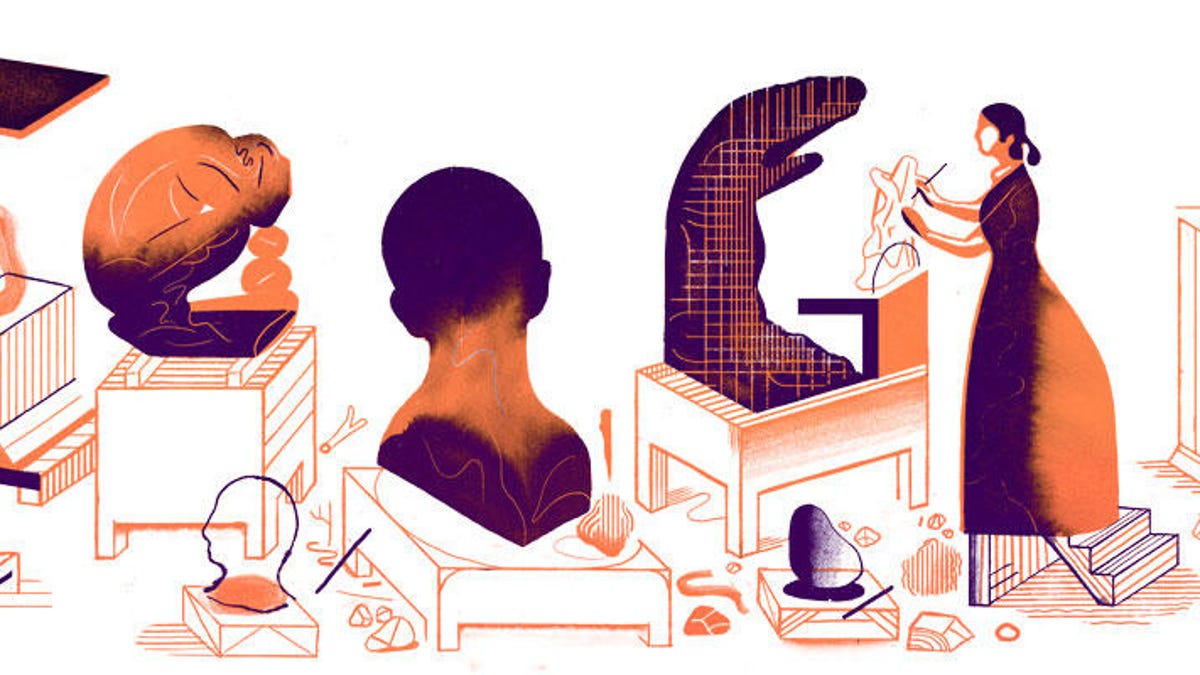Google Doodle celebrates Camille Claudel, French sculptor and Rodin muse
She had to overcome gender-based restrictions to study and create art.

Google celebrates French sculptor Camille Claudel, who was also a model for, and mistress to, renowned sculptor Auguste Rodin.
Sunday's Google Doodle celebrates French sculptor Camille Claudel, who, as a woman in 19th century France, had to overcome gender-based restrictions to study art and create in a male-dominated art world. A talented artist in her own right, but she's best remembered by many for her passionate but tumultuous relationship with renowned sculptor Auguste Rodin.
Claudel demonstrated interest in clay and molding at an early age, and on the advice of an established French sculptor moved to Paris when she was 17 so she could study art. However, the influential École des Beaux-Arts prohibited women from enrolling at the time, so she signed on at the Académie Colarossi, one of the few art schools where women were allowed to study.
To honor her accomplishment and artistry, Google dedicated its Doodle to Claudel on her 155th birthday.
Born in Fère-en-Tardenois, France, Claudel moved to the Montparnasse section of Paris in 1881 at the urging of Alfred Boucher. Claudel studied with Boucher for three years before Rodin -- the sculptor who created The Thinker -- was asked to take over her instruction.
Working as an assistant to Rodin, Claudel soon became his muse, serving as his model, mistress and confidant. Claudel was heavily influenced by Rodin's technique, especially the importance of capturing profiles and facial expressions.
During their 7-year relationship, the two also had a strong mutual influence. Claudel's 1887 Jeune Fille à la Gerbe was a precursor to Rodin's Galatea, which depicts the same girl in the same pose.
But she struggled for recognition of her own, and after their affair ended, Claudel descended into mental illness. She became obsessed with Rodin, accusing him of stealing her ideas and plotting to have her killed. She destroyed much of her work and spent the last 30 years of her life in a mental institution and never sculpted again.
Claudel received few visitors during her three decades at the institution, and after her death in 1943 at the age of 78, she was buried in a communal grave at the asylum.
Claudel was largely ignored by the art community, but she's gained recognition in recent years. Much of her work is on display at theMusée Camille Claudel in Nogent-sur-Seine, about an hour outside Paris.
The Doodle was designed by Paris-based artists Ichinori, who say the topic of Claudel was personally meaningful to them.
"Camille Claudel is a unique artist of her time, deeply involved in creating and constantly trying to open new doors," they told Google. "Her life was made of poetry, hard work, freedom, drama, and pure creation."

